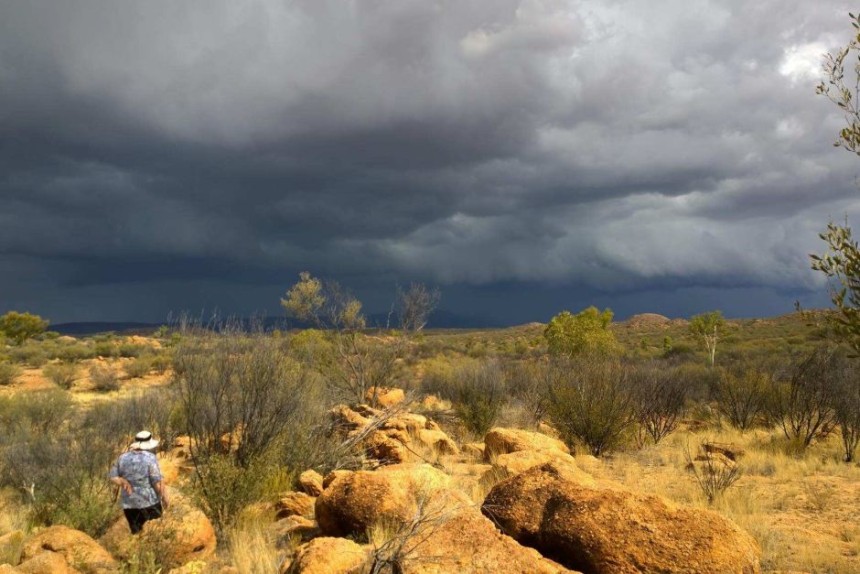Climate change could bring more rain to deserts

Climate change could actually increase rainfall in Australia’s desert regions, according to a new study.
Key points:
- Study finds deserts will likely have more rainfall from climate change
- But warmer temperatures will also increase evaporation and cause more catastrophic weather events
- Climate change is expected to intensify weather extremes such as bushfires, cold snaps, heatwaves and storms
The research challenges previous thinking that higher temperatures will make dry areas even drier, and wetter regions of the world even wetter.
But the higher rainfall might not be all that helpful as the warmer temperatures will also increase evaporation and cause more catastrophic weather events.
The findings are from a study conducted by climate change scientists at the University of New South Wales and published in the journal Nature Climate Change.
On average over those three dry regions combining parts of Sahara, the dry parts of North America and also Australian deserts, we expect more extreme rain events.
Dr Markus Donat, UNSW’s Climate Change Research Centre
“The most significant finding actually was that the extremes are increasing in both the dry and the wet regions, and precipitation totals are also increasing in the dry regions,” said Dr Markus Donat, from the UNSW’s Climate Change Research Centre.
He said in fact, a warmer atmosphere can hold more moisture, causing more rainfall.
Dr Donat said the research indicated more rainfall could be expected in areas such as Central Australia, California, central Asia, the Sinai and southern Africa.
“We are aggregating over those regions of the globe and will be getting this robust increase,” he said.
“And this would then suggest that… desert-like areas of the world on average are expected to get more rain.
“Of course there might be some regions that locally might have a different change, but on average over those three dry regions combining parts of Sahara, the dry parts of North America and also Australian deserts, we expect more extreme rain events.”
Dr Donat said it was not clear if the increased rainfall would alleviate drought in those areas.
He said higher temperatures often cause faster evaporation, which would siphon off any extra water.
“As the world gets warmer, also evaporation increases, especially if you’re talking just about let’s say a one-day precipitation extreme, therefore it’s not dry soil, it usually runs off dry soil erosion or something like this, but it is not necessarily useful to grow plants,” he said.
“Drought still is a relatively complex thing to understand because there’s this different factors that contribute — on the one hand we have the absence of rain, and here it might mean OK we get more rain, so it might ease some drought conditions.
“But on the other hand, we have more evaporation, and how the two play together is not really always clear in all those cases.”
Australian extreme events ‘will only intensify’
Climate change is expected to intensify weather extremes such as bushfires, cold snaps, heatwaves and storms.
These are all events which cause serious problems in Australia.
John Connor, the chief executive of Climate Institute, said Australia is a country of extreme weather and the extra heat-trapping carbon pollution or greenhouse gases being put into the atmosphere will only intensify the problem.
“We also know that warmer atmosphere does contain and can contain more moisture, and so it’s no surprise when we’ve done this on ground and greater detailed modelling to see these sorts of results,” Mr Connor said.
He said these changes can already be seen across the country.
“We are already seeing intense downpours and the floods that we’ve experienced in Queensland; one of the 100-year events happening once every two or three years,” he said.
“We’re seeing longer bushfire seasons as well, so these impacts are happening now and will continue to grow.
“An interesting part of this was this work looked at the on-ground experience as well as the broader modelling, and that’s a very relevant thing of course when we’re seeing some of that on-ground experience under threat at CSIRO with funding cuts and staff changes.”
Original article posted on ABC News, 9th March 2016 (Link)

